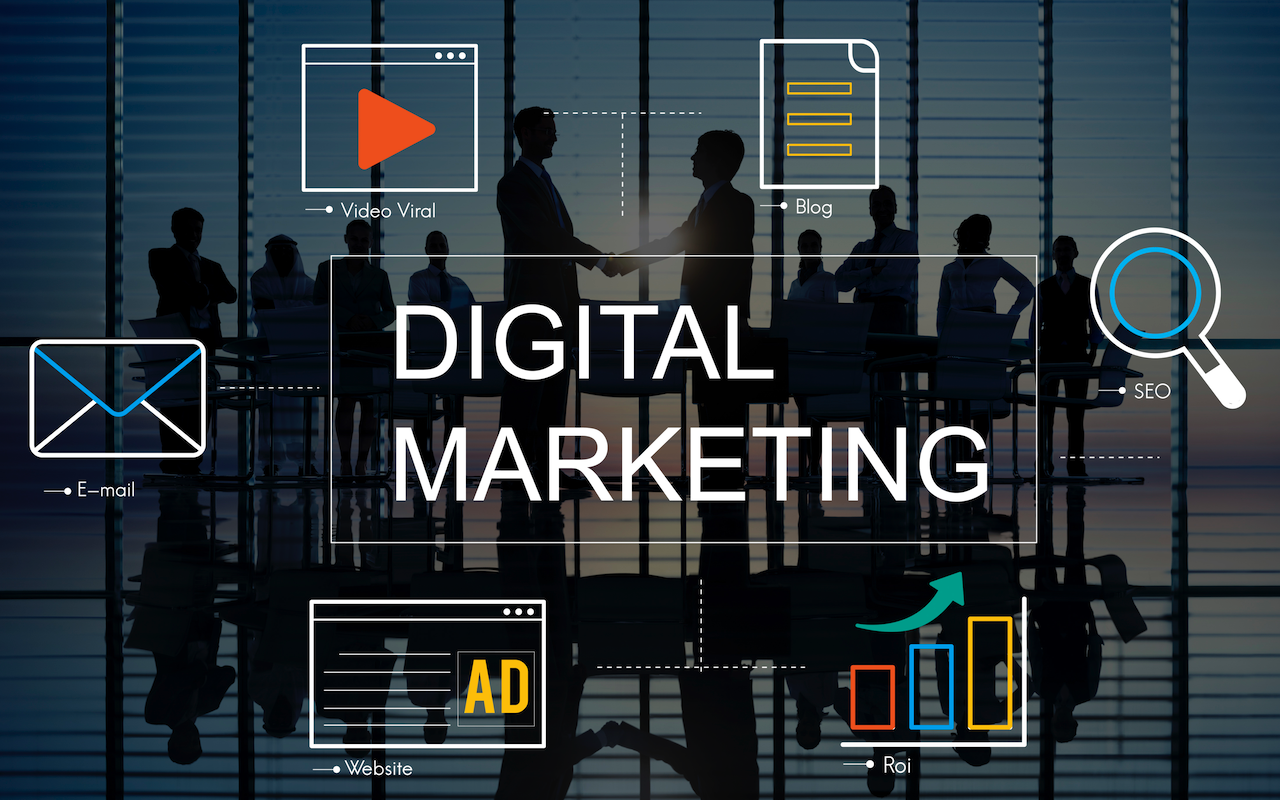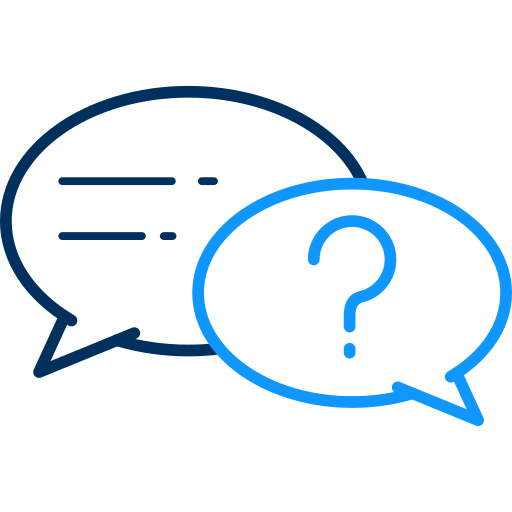
Digital marketing is how businesses stay visible, stay relevant, and stay in business.
From startups to enterprise teams, knowing how digital marketing works and why it works isn’t optional anymore. But the field is noisy. Too many guides go deep into jargon or scatter advice across endless tools and buzzwords.
This guide strips it back. We’ll cover what digital marketing is, why it matters, which channels actually work, how to build a strategy, and when outsourcing makes sense.
What Is Digital Marketing?
Digital marketing is the use of online channels to attract, convert, and retain customers. It includes content, SEO, social media, email, paid ads, analytics, and more.
Instead of pitching your product in-person or via billboards, you’re showing up where people already spend time: search engines, inboxes, social apps, and websites.
At its core, digital marketing is just this: reaching the right people with the right message at the right moment, using digital tools to do it smarter and faster.
Why Digital Marketing Matters
Marketing has always been about attention. Today, that attention lives online. Here’s why digital marketing is the most effective way to reach customers:
- It scales fast: You can reach 1 or 1 million people with the same content or ad.
- It’s measurable: You can track who clicked, who bought, and what worked.
- It’s flexible: You can run micro-campaigns on small budgets or global campaigns at scale.
- It’s targeted: You’re not wasting dollars on people who aren’t interested.
And most importantly, it meets your customers where they are.
Core Digital Marketing Channels That Drive Results
Not every business needs every channel. But here are the key ones worth understanding.
1. Search Engine Optimization (SEO)
SEO means making your content show up in Google. Done right, it brings in free, consistent, high-intent traffic.
Good SEO includes:
- Clear keyword targeting
- Fast, mobile-friendly pages
- Relevant, helpful content
- Clean technical structure
It’s not quick. But long-term, it’s one of the highest ROI channels.
2. Content Marketing
This is how you attract, inform, and convert users through blogs, videos, whitepapers, and more.
It’s not just about writing articles; it’s about solving problems. Think: guides, templates, comparison posts, and case studies.
When your content answers questions your audience is already asking, you build trust and traffic.
3. Pay-Per-Click (PPC) Advertising
Google Ads, Facebook Ads, and LinkedIn campaigns fall here. PPC lets you show ads to users based on what they search, what they do, or who they are.
You pay only when someone clicks, which means you can control spending tightly.
PPC works fast but it burns money fast, too, if done wrong.
4. Email Marketing
Still one of the highest-converting channels.
You’re speaking directly to people who opted in. Email works for:
- Nurturing leads
- Re-engaging cold users
- Announcing offers or content
To make it work, you need clean lists, helpful messages, and proper segmentation.
5. Social Media
Social helps build brand presence and awareness. It’s also where customers interact and ask questions.
Organic reach is harder than it used to be, but social still works for:
- Building authority
- Creating community
- Sharing bite-sized value
- Running ads to targeted audiences
How to Build a Digital Marketing Strategy (That Actually Works)
Forget overwhelming “funnels” or bloated dashboards. A good strategy is clear and focused.
Here’s a lean 5-step framework.
1. Define Your Audience
Who are you targeting? Go beyond demographics by asking what are they struggling with, and where do they spend time online?
Use insights from your existing data, competitors, and tools like Google Analytics or AnswerThePublic.
2. Set One Primary Goal
Do you want leads, purchases, calls, or brand awareness? Pick one. Avoid vague goals like “grow traffic” unless it ties directly to revenue.
3. Pick 2–3 Core Channels
Don’t spread yourself thin. For example:
- A SaaS tool might prioritize SEO + email
- An eCommerce brand may start with Google Ads + Instagram
- A B2B consultant might focus on LinkedIn + content
4. Create Relevant, Focused Content
Every piece of content, whether a blog post, landing page, or ad, should solve a real user need and lead them toward your goal.
5. Measure and Improve
Use tools like Google Analytics, SEMrush, or native platform insights to track:
- Click-through rates
- Conversions
- Bounce rates
- ROI per channel
Adjust based on what’s working, not based on trends.
Digital Marketing for Different Business Sizes
There’s no universal playbook. The right digital marketing approach depends on your stage and resources.
Solo Entrepreneurs
Start lean. Focus on SEO and content marketing to attract traffic without spending heavily. Build an email list early, even if it’s small.
Startups
Speed matters here. Use PPC and paid social ads to test messages and get traction. Use landing pages, lead magnets, and clear funnels to guide users to convert.
Growing Teams
Once the basics work, expand to multichannel campaigns. Combine SEO, paid media, email, and social with analytics in place to guide decisions.
Enterprises
At scale, you need systems. Use CRM integrations, automated workflows, and full-funnel attribution models to track where revenue comes from. Digital marketing here is less about traffic and more about optimization.
When to Consider Outsourced Marketing Services
Running all of this in-house isn’t always realistic, especially for small teams or startups.
Here’s when outsourcing makes sense:
- You don’t have time to manage day-to-day marketing tasks
- You need multi-channel campaigns but lack internal expertise
- You want strategy and execution under one roof
- You’ve plateaued and need fresh input from specialists
A trusted partner offering outsourced marketing services can handle your campaigns while you focus on growth. The right agency should act like an extension of your team: transparent, data-driven, and goal-aligned.
One example is Effeect, a human-centric agency that blends SEO, PPC, email, content, and performance marketing under one strategy. For teams looking to streamline efforts without building a full in-house team, this approach can be effective.
Common Mistakes in Digital Marketing (And How to Avoid Them)
Digital marketing isn’t just about doing the right things; it’s also about avoiding the wrong ones. These common missteps cost time, money, and momentum.
Trying to Be Everywhere at Once
Many teams jump on every new platform, such as Instagram, LinkedIn, TikTok, Threads, without clear purpose. This spreads your resources too thin. Instead, start with one or two channels where your audience actually spends time.
Ignoring Data and Analytics
You can’t improve what you don’t measure. Not setting up basic tools like Google Analytics, tracking conversions, or reviewing bounce rates means you're guessing. Set clear KPIs and check them weekly.
Writing for Algorithms, Not People
Yes, SEO matters but writing robotic, keyword-stuffed content hurts trust and rankings. Focus on solving real problems in a human way. If it’s helpful to your audience, it’s helpful to search engines too.
Setting Vague Goals Like “More Traffic”
“More traffic” means nothing if it doesn’t lead to leads or sales. Set specific outcomes: “10 new leads per week from organic search” is a goal you can track and improve.
The Role of AI in Digital Marketing Today
AI isn’t replacing marketers; it’s making smart ones faster. In 2025, it’s less about hype and more about practical tools that save time and boost results.
Content Brief Generation
AI tools can help create content outlines, topic clusters, and keyword maps. But the final writing still needs a human voice.
Predictive Analytics
Machine learning models can forecast customer behavior, segment audiences, and surface trends before they’re obvious.
Ad Performance Forecasting
AI can simulate how different ad variations might perform before spending money—saving time on A/B testing and budget waste.
Chatbots for Lead Qualification
AI chatbots can handle basic customer questions, collect email addresses, and route leads, all while your human team focuses on bigger goals.
Final Thoughts: Keep It Simple, Keep It Consistent
You don’t need to do everything. You just need to do the right things consistently.
Start with one or two strong channels. Get clear on your audience. Focus on useful content. Track what works. Then build from there.
Digital marketing isn’t magic. But when done right, it’s one of the smartest investments any business can make.
 FAQs
FAQs
Traditional marketing relies on offline methods like TV, print, and radio. Digital marketing uses online channels such as search engines, email, and social media to reach and engage with your audience. It’s more measurable, more targeted, and typically more cost-effective.
It depends on the channel. Paid ads (PPC) can drive traffic within days. SEO and content marketing may take several months to build momentum, but they offer stronger long-term returns. Consistency and strategy matter more than speed.
Yes. Digital marketing helps small businesses attract local and global audiences without spending heavily on traditional ads. Even a simple website, basic SEO, and email list can help you get leads and grow revenue.
You can start small; many businesses do. But as your campaigns grow, managing everything in-house gets harder. That’s when working with external specialists can save time, reduce guesswork, and improve results.
Featured Image by Freepik.
Share this post
Leave a comment
All comments are moderated. Spammy and bot submitted comments are deleted. Please submit the comments that are helpful to others, and we'll approve your comments. A comment that includes outbound link will only be approved if the content is relevant to the topic, and has some value to our readers.

Comments (0)
No comment